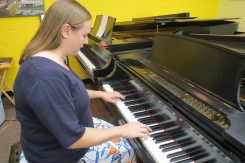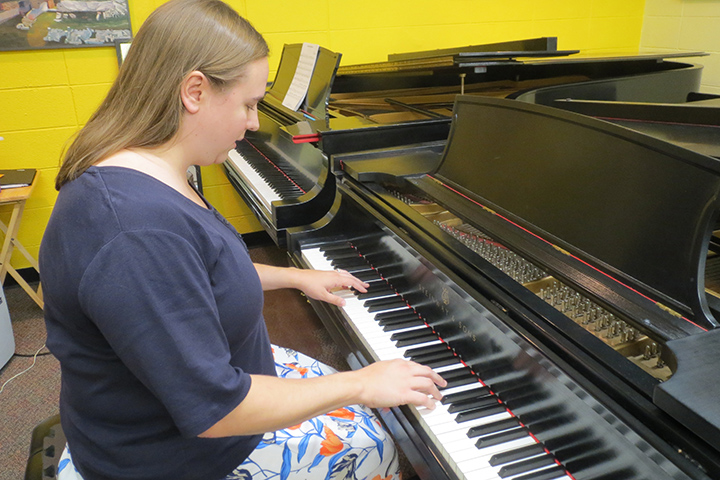By Mark Ambrogi
Natalie Todd knows first-hand the Taubman Approach to piano playing relieves stress on her arms.

“I had some symptoms before, but it turned into a full-blown injury when I was in graduate school, and all of sudden I was playing a lot more,” Todd said. “Throughout the year when I was first injured, my professor kept recommending different things. I tried massage therapy and epsom salts, and as soon as I would play again it would come right back.”
The pain was from the fingertips to the elbow in both arms. At the end of the semester in 2009, her professor suggested she attend the Golandsky Institute, the premier institute for studying the Taubman Approach, in Princeton, N.J. She got immediate relief but it was clear she had to keep studying it, so she traveled to Boston to get more lessons. At that time, there were no teachers in the Midwest.
Todd is in the final stages of becoming a certified instructor of the Taubman Approach, developed by the late Dorothy Taubman. Todd, who grew up in Fort Wayne, graduated from Butler University before attending Kent State. Todd is already teaching the method to her students at her home studio in Carmel and at Butler. She also teaches by Skype.
Todd moved to Carmel from Hartford, Conn., in September 2015. She wanted the benefit of being close to her Butler connections and knew there was a need for Taubman Approach teachers in the Midwest.
“Right now I’m the only person in Indiana who teaches it and studied it as much as I have,” Todd said.
She said the Taubman Approach teaches pianists to move in a coordinated way.
“This means keeping the body in its natural alignment, finger, hand, and arm unified, seat height adjusted to place the keyboard directly under the hands, avoiding the body’s extreme range of motion, and using the most efficient and free movements to play the piano,” Todd said. “Learning to align the body and move freely and efficiently is what relieves repetitive strain injuries and unlocks a virtuoso technique.”
Todd said anyone can benefit from learning what the Taubman Approach has to offer, even if they never go through a full retraining process.
“I do my best to ensure that all my students, even the young ones, learn the basics of alignment, but the student is free to go only as deep into the approach as they feel is necessary for them to play the way they want to,” she said.
For more, visit natalietodd.net and golandskyinstitute.org/about/taubman-approach/.



